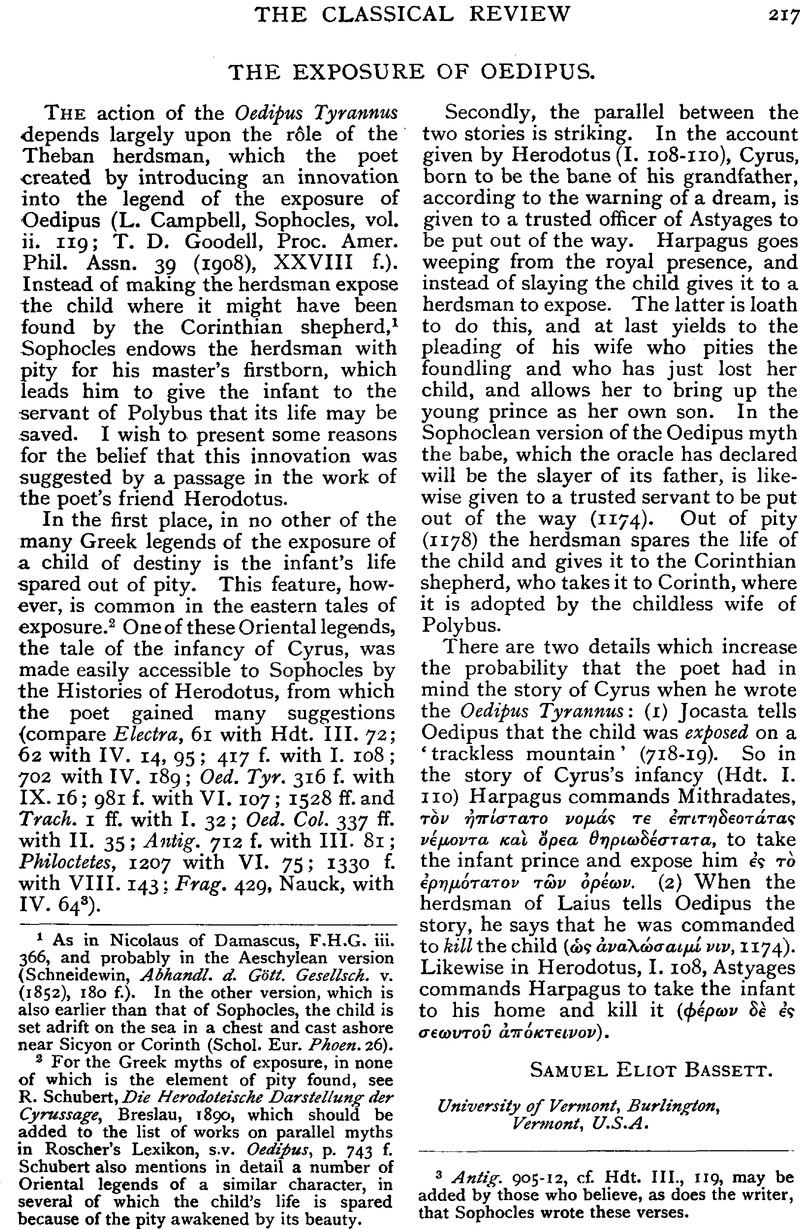No CrossRef data available.
Article contents
The Exposure of Oedipus
Published online by Cambridge University Press: 27 October 2009
Abstract

- Type
- Original Contributions
- Information
- Copyright
- Copyright © The Classical Association 1912
References
1 As in Nicolaus of Damascus, F.H.G. iii. 366, and probably in the Aeschylean version (Schneidewin, , Abhandl. d. Gött. Gesellsch. v. (1852), 180 f.)Google Scholar. In the other version, which is also earlier than that of Sophocles, the child is set adrift on the sea in a chest and cast ashore near Sicyon or Corinth (Schol. Eur. Phoen. 26).
2 For the Greek myths of exposure, in none of which is the element of pity found, see Schubert, R., Die Herodoteische Darstellung der Cyrussage, Breslau, 1890Google Scholar, which should be added to the list of works on parallel myths in Roscher's Lexikon, s.v. Oedipus, p. 743 f. Schubert also mentions in detail a number of Oriental legends of a similar character, in several of which the child's life is spared because of the pity awakened by its beauty.
3 Antig. 905–12, cf. Hdt. III., 119, may be added by those who believe, as does the writer, that Sophocles wrote these verses.


